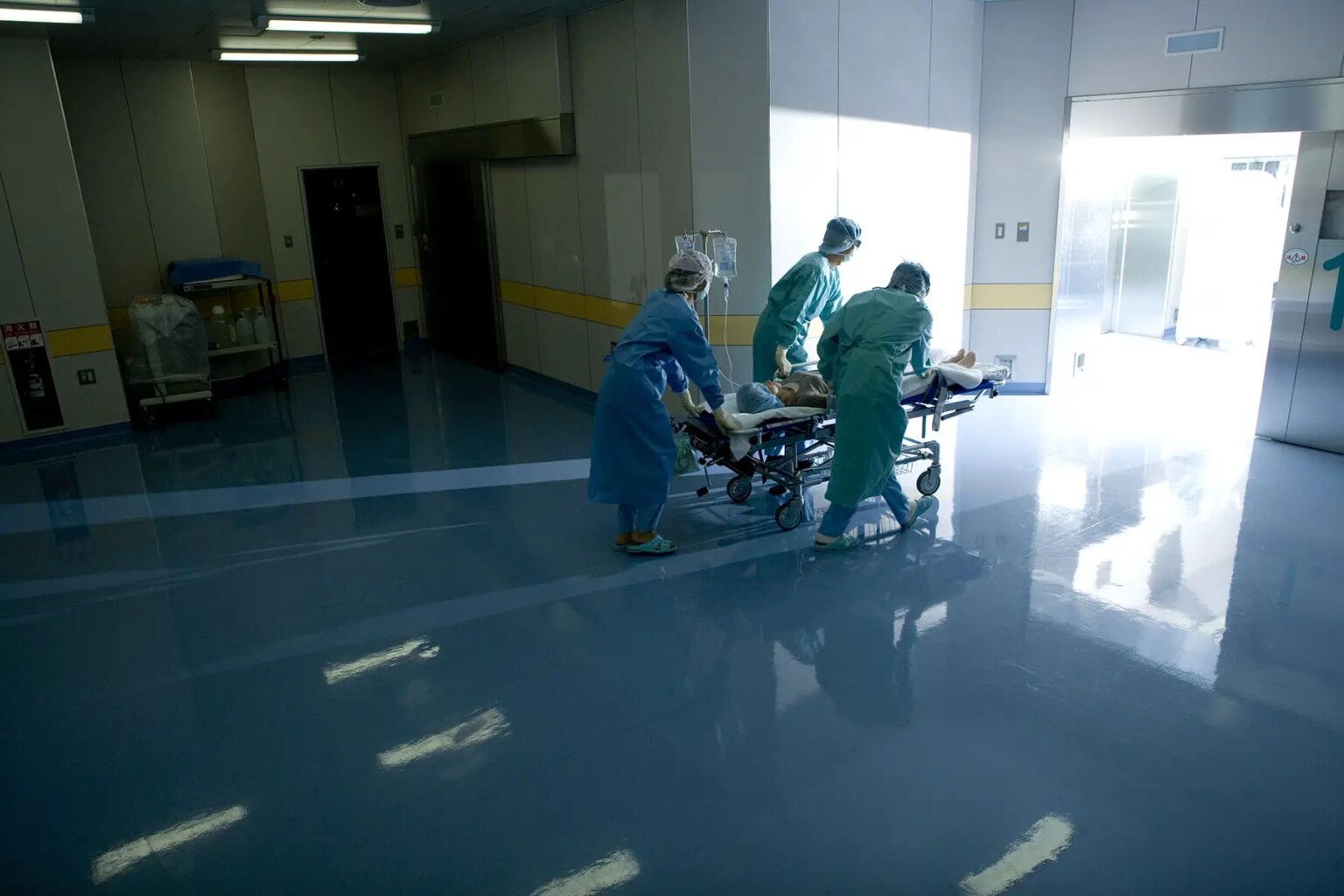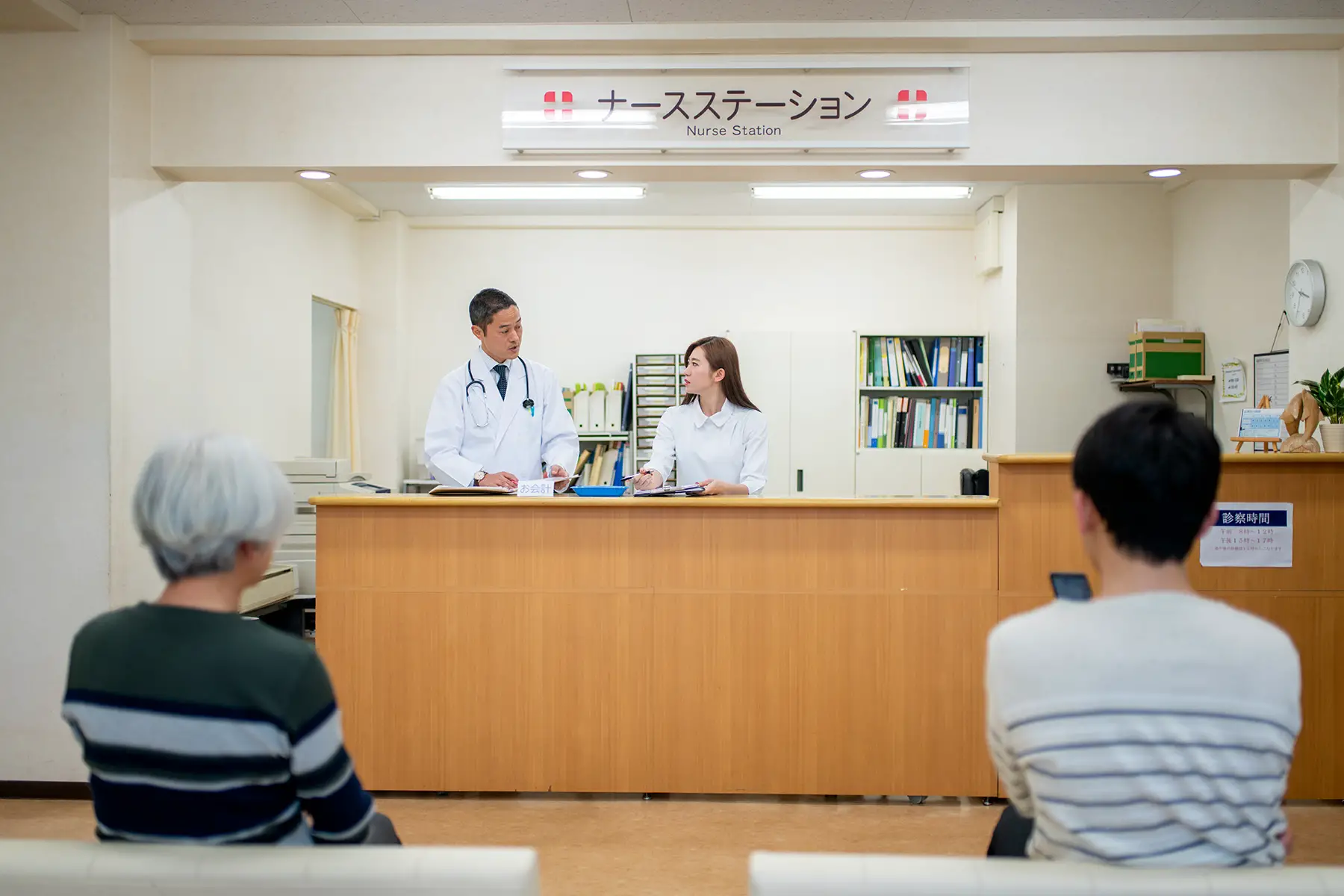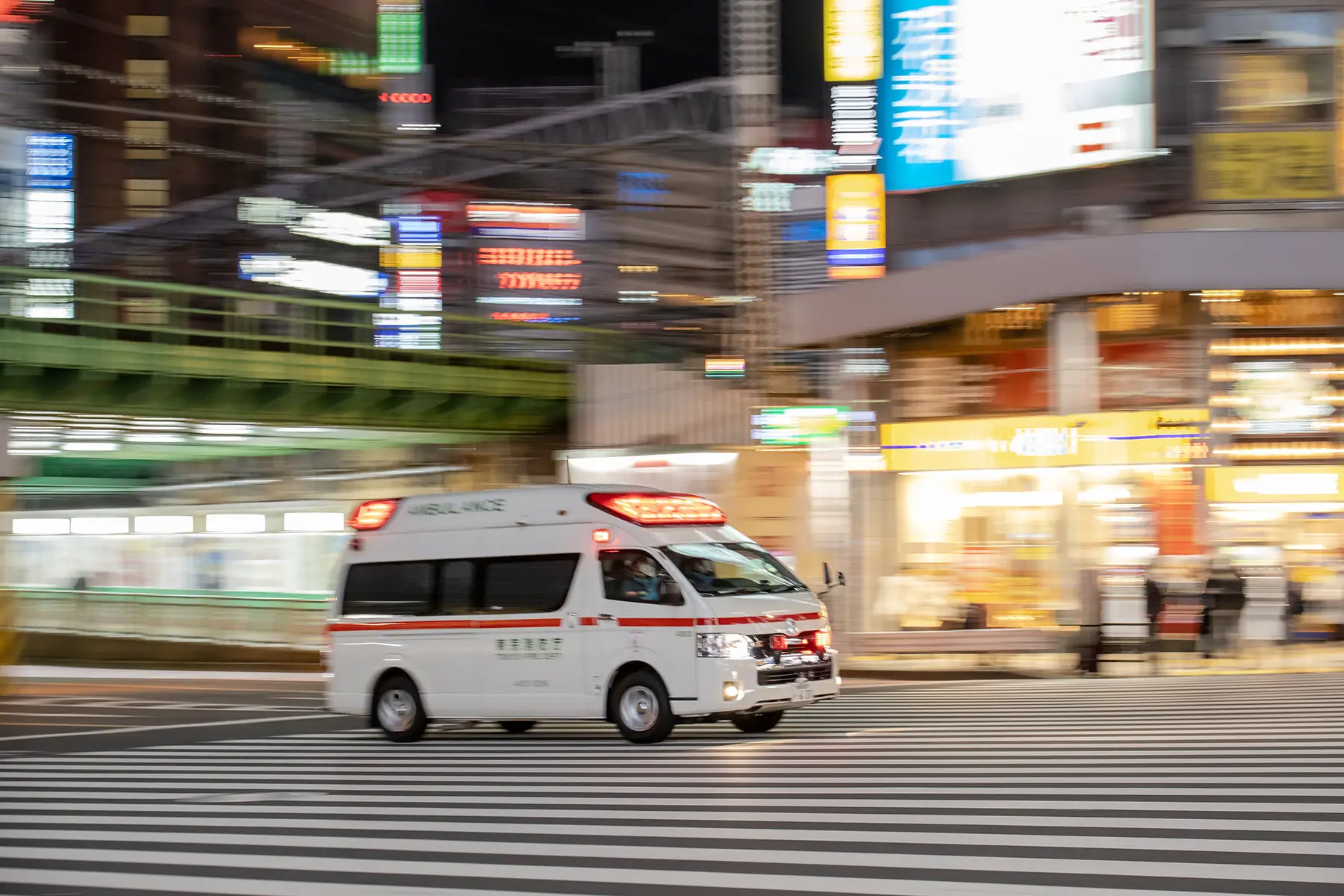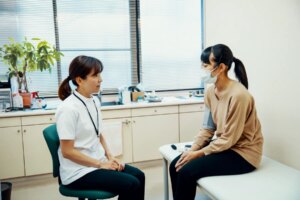When you’re moving to Japan, you’ll need to have health insurance to find treatment in the Japanese healthcare system. At some point, you may visit a hospital for yourself or a family member. The good news is that you can expect good care at a well-regulated price.
Here’s what you need to know:
Cigna Global
Enjoy peace of mind while living in Japan with Cigna Global’s long-term international health insurance plans (12+ months). Get tailored coverage, direct billing with many providers, complex case management, and global care on demand, with access to a network of 1.5+ million doctors, specialists, and therapists.
Hospitals in Japan
Japan has many hospitals (病院, byoin) that rank among the best in the world and offer a wide variety of medical treatments and expertise. The healthcare system is made up of clinics and hospitals. Hospitals are larger and have greater capabilities for tests and surgeries, and have more inpatient capacity.
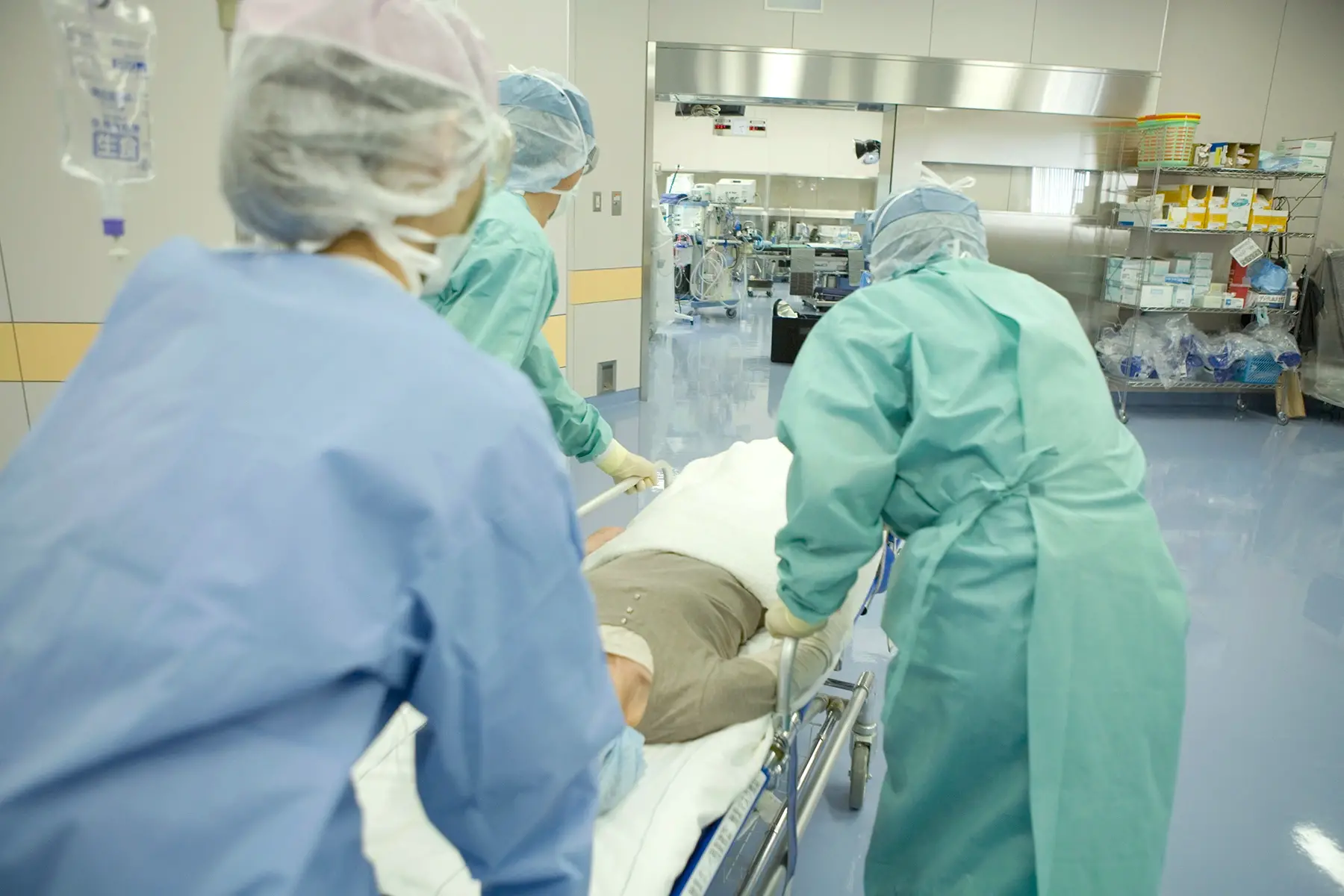
Japan has more than 8,000 hospitals with about 85% private non-profits and 15% public facilities. The Ministry of Health, Labor, and Welfare (MHLW – 厚生労働省, Kose Rodo Sho) closely monitors hospital treatments, and sets a fee schedule in order to regulate costs. Everyone in Japan is required to have health insurance, with some exceptions for the unemployed, single parents, and people with disabilities.
How to access hospital treatment in Japan
Most people get a referral (紹介状, shokaijo) from a clinic doctor before visiting a hospital, as hospital treatments are more expensive without one. However, it’s also possible to simply arrive at some hospitals in the morning and wait to see a doctor or nurse.
To make an appointment, start by checking the hospital’s website. Many have information in English, including directions to make an appointment online, or whether it is necessary to call directly. You may want to contact them ahead of time if you need language assistance.
You will need to bring:
- Health insurance card (保険証, hoken sho) or proof of insurance
- Hospital registration card (for returning patients) (診察券, shinsatsu ken)
- Valid identification (身分証明書, mibun shomeisho)
- Referral letter from a doctor if possible
- Credit card or other form of payment
Emergency treatment in Japan
Recent reports of ambulances driving patients to the hospital and being turned away from multiple emergency rooms have highlighted issues of understaffing, since Japan has a much lower physician-to-bed ratio than other developed nations.
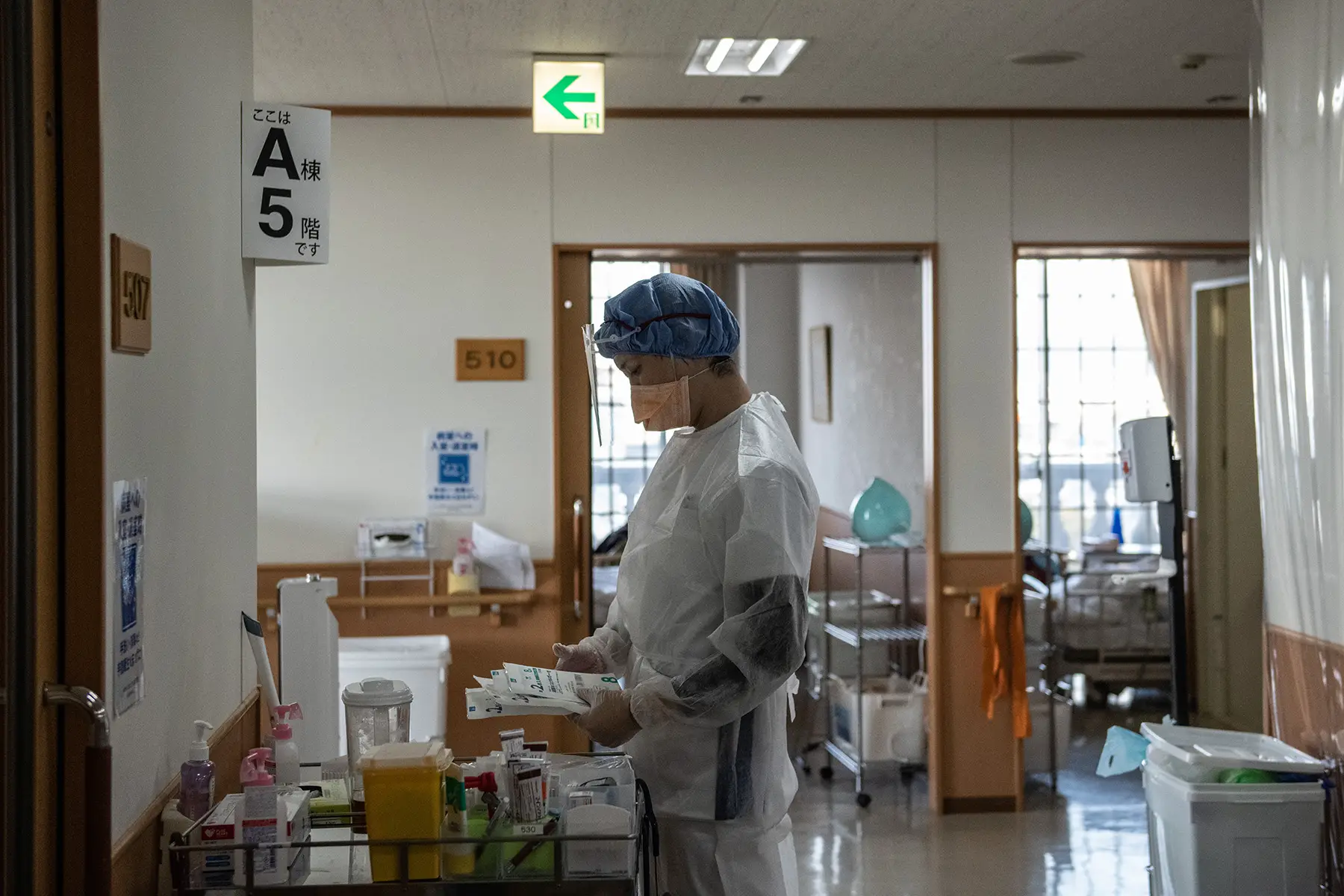
Major hospitals can provide emergency care 24 hours a day year-round regardless of a patient’s nationality or insurance status. However, you must pay the full cost of treatment in cash or with a credit card at the time of the visit.
Doctors will tend to the most-critical patients first regardless of check-in order, so be ready for a very long wait. Additionally, hospitals can turn away patients or charge a non-referral fee in situations not deemed an emergency or if an emergency room is full. In this case, you can ask about the nearest emergency clinic (救急病院, kyukyu byoin).
Some hospitals require a deposit of several hundred thousand yen to cover the cost of care. For example, if you are in a car accident on a weekend and go to an emergency room, you might have to put a deposit of ¥300,000. You would get back the remainder of the deposit following your treatment.
Emergency rooms may not have full billing staff available on nights, weekends or holidays. In this case, you must pay when billing reopens.
If you need emergency care, you can call 119 and ask for an ambulance. Transportation in an ambulance is free, but you will need to pay for care received.
Hospital stays in Japan: what to expect
Before checking in for a hospital stay, you will have a consultation with a hospital doctor to explain your condition and receive a written care plan for treatment, procedures, and testing to discuss with your family.
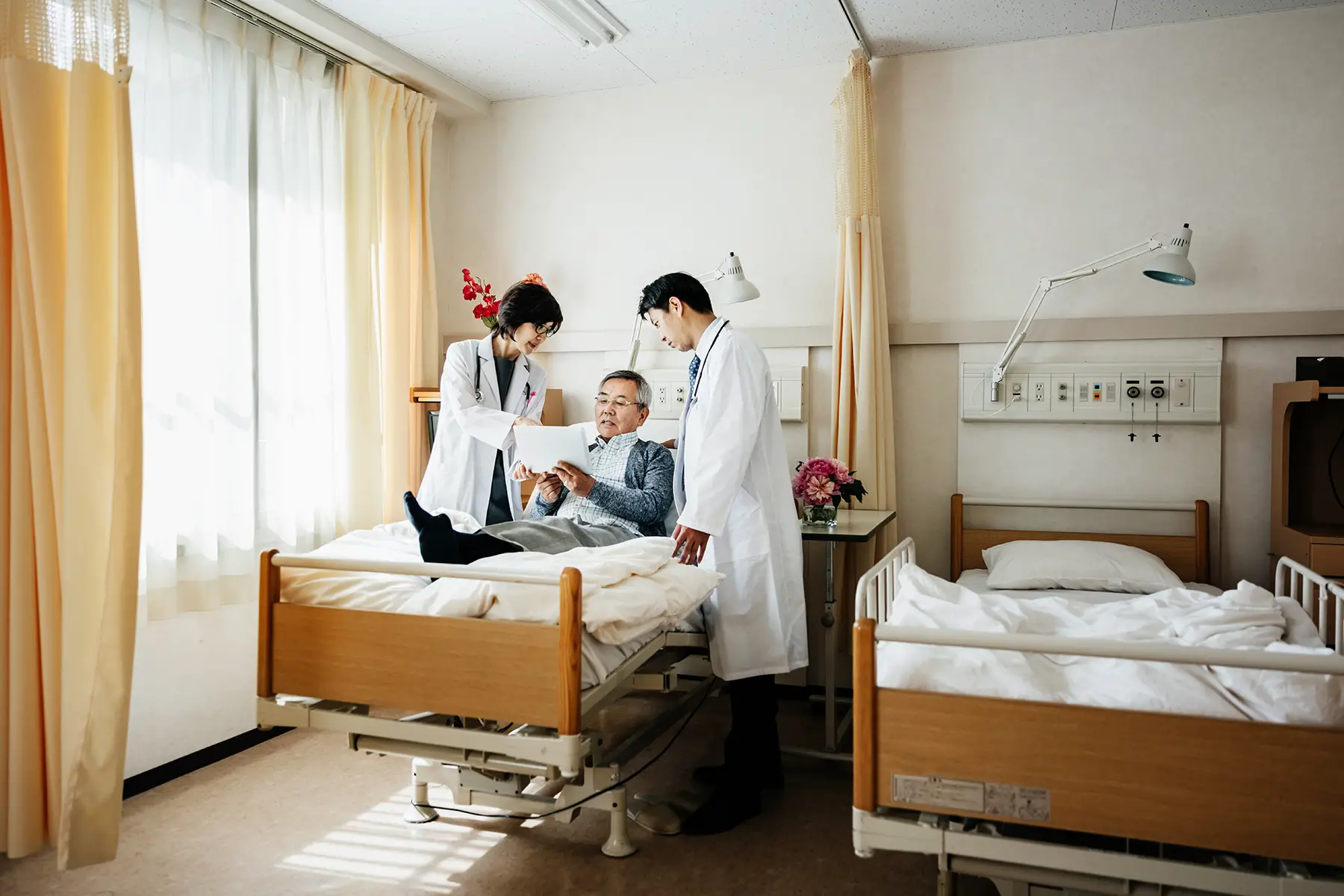
On the day you arrive for check in, you can expect to share a room with one or more people with access to a shared bathroom. Hospitals have options for private rooms across a wide price range, from an extra few thousand yen to several hundred thousand yen per night. Check your private room coverage with your health insurance.
What to bring to the hospital
- health insurance card
- hospital card
- admission pledge (if required by the hospital)
- signed consent forms
- personal seal (if you have one)
- application for a private room if desired
- credit card or other form of payment
- in some cases like major surgery, you may need an advocate (a spouse, friend, or colleague) who can make decisions for your health if you are unable
You can expect a hospital stay to last longer than it might in other countries, possibly several weeks.
Many hospitals have a convenience store where you can buy essential items for your stay not provided by the hospital.
- all current medications
- toiletries (toothbrush, toothpaste, shampoo, soap, hairbrush)
- towels
- chopsticks, spoon, or other eating utensils
- cup
- slippers or indoor shoes
- pajamas
- underwear
- tissues
- writing supplies, books
- pillow, eye mask, ear plugs
Get permission before bringing a laptop or using your phone in your room as it could bother other patients or even interfere with sensitive medical equipment. Bring headphones for any media use. Also note that you should remove nail polish and fake nails before admission. Pay hospitalization fees at the end of each week, month, or at the end of your stay.
Hospital costs in Japan
Each hospital clearly defines its own costs. They can vary for those without Japanese public health insurance.
In many cases, the cost of medical testing, injections, medication, and imaging will be estimated and charged in a bundled daily fee. On top of this rate, patients must pay for expenses like surgery, transfusions, and rehabilitation. Room upgrades will cost extra, and Japanese public insurance does not cover them. Plan to pay a few hundred yen per meal, as well as a small daily fee for personal items like pajamas and toiletries, or bring your own.
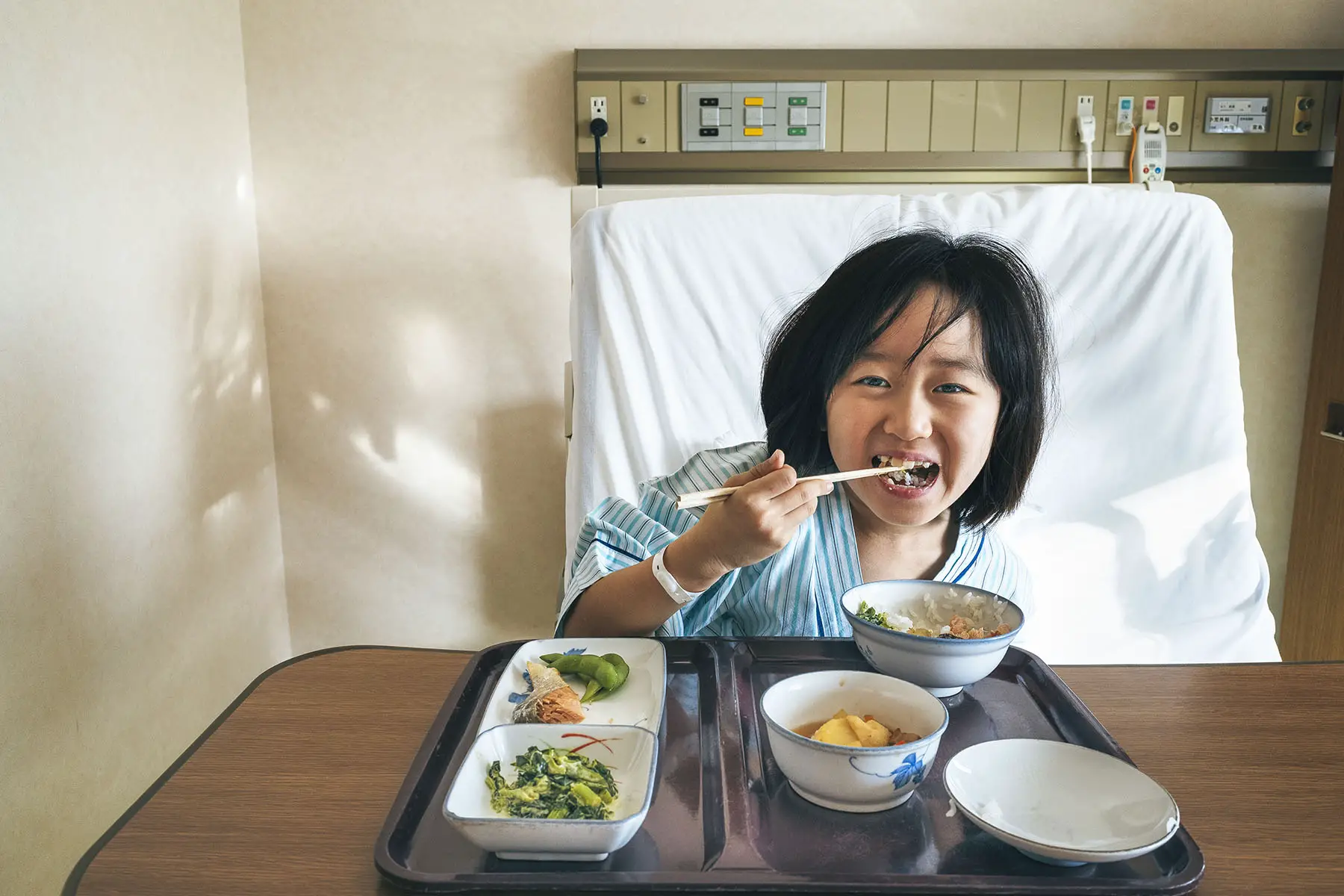
The Health Insurance Act of 2022 requires hospitals to charge a fee to patients without a referral letter, in addition to treatment costs. Elementary and preschool-aged children are exempt from this fee. Patients choosing to continue to visit the hospital after a recommendation to get follow-up care from a clinic doctor may also be charged a fee for that second selective visit. There are some exceptions for single-parent homes, the elderly, preschool-aged children, and the unemployed.
Health insurance for hospital costs
You must pay hospital treatment costs upfront and in full at the time of your visit, including any diagnostic work. Many international hospitals accept credit cards and bank transfers, plus you will find ATMs in the hospital lobby.
If you are covered by Japanese public health insurance, you can expect to pay 30% or less (20% for children and 10% for elderly people) of your treatment fees, with a monthly cap on expenses proportionate to your age and income.
If you have coverage from another type of insurance, you can ask your insurer to contact the hospital and issue a pre-authorization of care on your behalf.
Otherwise, you must pay the hospital bill and submit a claim for reimbursement with your insurance company. Ask for an itemized bill in English to facilitate insurance claims, as most hospitals will not negotiate with companies directly.
Many insurance companies offer policies for travelers and expats, including:
Being discharged from Japanese hospitals
You can be discharged when you have permission from the doctor overseeing your hospital stay. Hospital staff will discuss appropriate procedures and review expenses before you leave. Follow-up appointments and recommended outpatient care will also be confirmed at this time.
You can take X-rays and other diagnostics that were made during your stay with you. After you are discharged and before you leave the hospital, you must pay for your visit. Make sure you have your deposit slip as well as a credit card or cash.
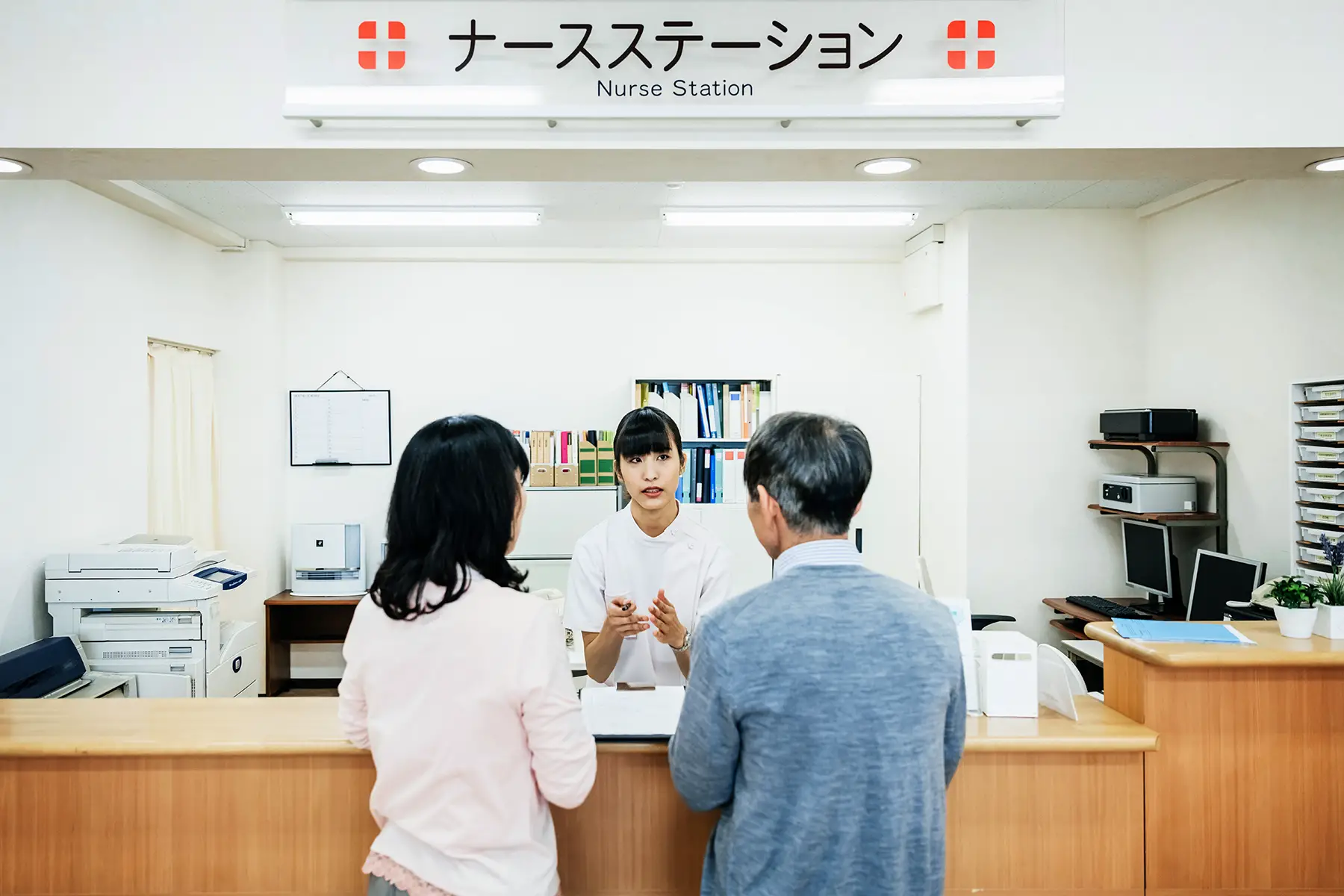
While possible to discharge yourself without doctor approval, it is not recommended since hospitals have the option to refuse future care.
Visiting someone in a Japanese hospital
A visit to someone in the hospital in Japan is called omimai (お見舞い) and is generally very welcome. Visiting hours vary between hospitals. Some allow visitors daily from early morning until late evening, while others may restrict visitors to afternoons on weekdays with longer visiting hours on weekends. Family and designated supporters may have even more access to the patient as desired.
Visitor rules may include:
- check-in at the general information desk
- get a visitor’s badge
- one person at a time can visit
- no children under the age of 12
- avoid eating in patient rooms
- disinfect your hands frequently
- stay home if you are unwell
- be very quiet and considerate of all patients
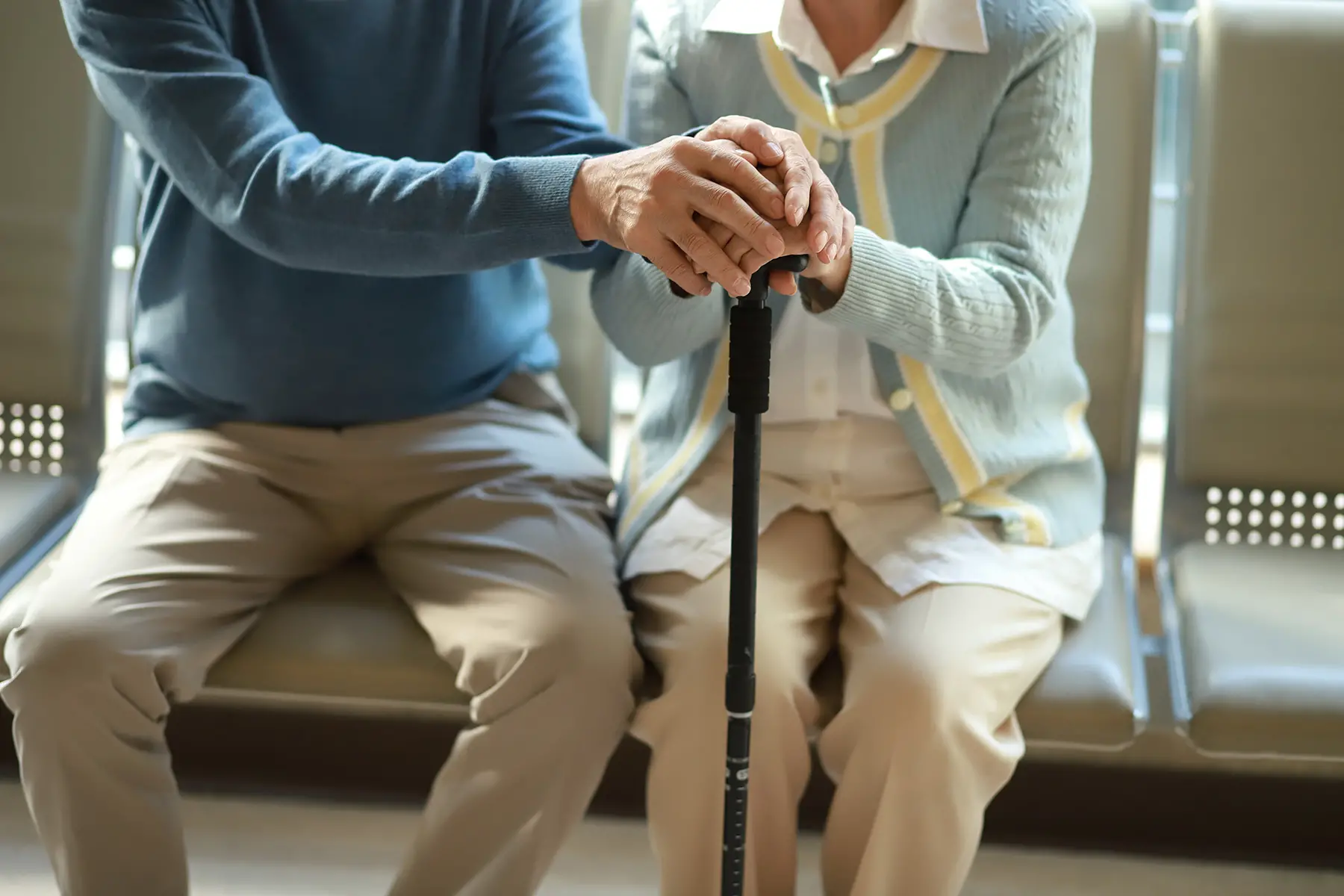
Like in many other countries, bringing flowers to a patient is common. Many hospitals even have little gift shops where you can purchase bouquets. However, it is best to avoid chrysanthemums. These flowers are known as bukka (仏花), associated with funerals, graves, and home altars (memorials), and considered bad luck if given in any other situation. A few other beliefs to consider when choosing flowers include:
- Potted plants suggest the patient will become rooted to the bed like plant roots in soil
- Having to care for flowers while in the hospital detracts energy from recovery
- Camellias fall off the stalk in a way that suggests the patient will have their head fall off or die
- Lilies have a strong smell and scatter pollen
- Cyclamen sounds too similar to the word for the agony of death
- Hydrangea means ‘fade away’
- Any red flowers may suggest blood or bleeding
The best Japanese hospitals
Japan accounts for 18 of the world’s top 250 hospitals in 2023, including two in the top 30.
- The University of Tokyo Hospital (東大病院, Todai Byoin), Tokyo – Most doctors speak English at the hospital’s International Medical Center. A wide variety of diagnostic tests and clinical services are available. Japanese public health insurance is accepted.
- St. Luke’s International Hospital (聖路加国際病院, Seiruka Kokusai Byoin), Tokyo – This hospital popular with expats sees more than 2,500 outpatients a day, and includes departments for women’s health, pediatrics (including surgery), oncology, and emergency care.
- Kameda Medical Center (亀田総合病院, Kameda Sogo Byoin), Kamogawa – In 2009, Kameda became the first hospital in Japan to be accredited by the Joint Commission International. With clinics and hospitals in one center, it offers a range of family medicine, rehabilitation, and more.
- Kyushu University Hospital (九州大学病院, Kyushu Daigaku Byoin), Fukuoka – Accredited by the Japan Council for Quality Healthcare since 2019, Kyushu University Hospital values holistic medicine and is located near well-known therapeutic hot springs. Its specialties include heart, brain, and children’s health.
Useful resources
- The Japan Medical Education Foundation (JMIP – 公益財団法人 日本医学教育財団) – provides detailed information on the healthcare system and a searchable list of clinics and hospitals (in Japanese) rated by the Japan Medical Services Accreditation for International Patients
- Japan International Hospitals (JIH) – provides a similar searchable list (in English) of accredited hospitals that welcome international visitors and residents
- Japan Healthcare Info – a non-profit aimed at helping the expat community navigate healthcare in Japan.
